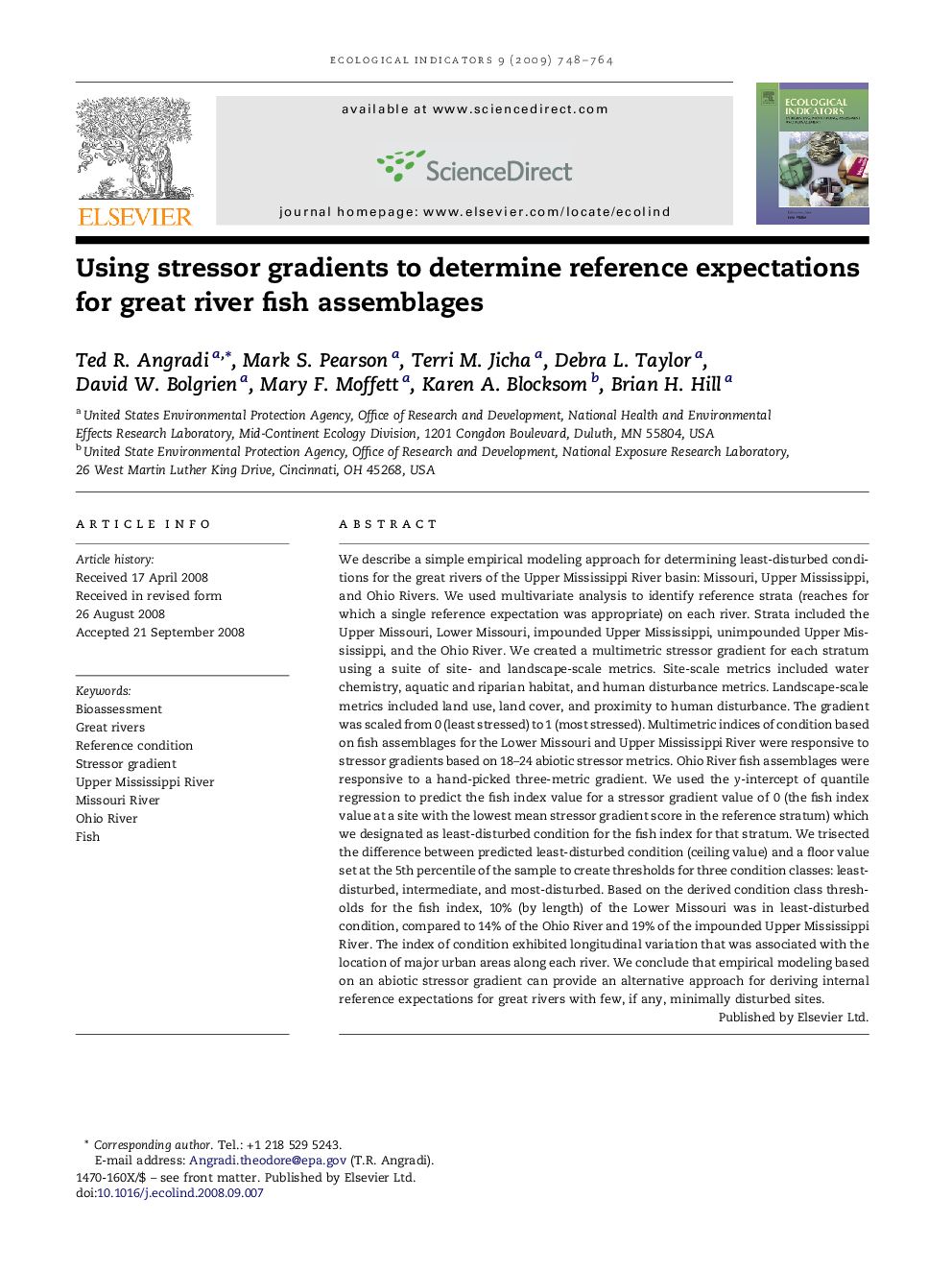| Article ID | Journal | Published Year | Pages | File Type |
|---|---|---|---|---|
| 4374376 | Ecological Indicators | 2009 | 17 Pages |
We describe a simple empirical modeling approach for determining least-disturbed conditions for the great rivers of the Upper Mississippi River basin: Missouri, Upper Mississippi, and Ohio Rivers. We used multivariate analysis to identify reference strata (reaches for which a single reference expectation was appropriate) on each river. Strata included the Upper Missouri, Lower Missouri, impounded Upper Mississippi, unimpounded Upper Mississippi, and the Ohio River. We created a multimetric stressor gradient for each stratum using a suite of site- and landscape-scale metrics. Site-scale metrics included water chemistry, aquatic and riparian habitat, and human disturbance metrics. Landscape-scale metrics included land use, land cover, and proximity to human disturbance. The gradient was scaled from 0 (least stressed) to 1 (most stressed). Multimetric indices of condition based on fish assemblages for the Lower Missouri and Upper Mississippi River were responsive to stressor gradients based on 18–24 abiotic stressor metrics. Ohio River fish assemblages were responsive to a hand-picked three-metric gradient. We used the y-intercept of quantile regression to predict the fish index value for a stressor gradient value of 0 (the fish index value at a site with the lowest mean stressor gradient score in the reference stratum) which we designated as least-disturbed condition for the fish index for that stratum. We trisected the difference between predicted least-disturbed condition (ceiling value) and a floor value set at the 5th percentile of the sample to create thresholds for three condition classes: least-disturbed, intermediate, and most-disturbed. Based on the derived condition class thresholds for the fish index, 10% (by length) of the Lower Missouri was in least-disturbed condition, compared to 14% of the Ohio River and 19% of the impounded Upper Mississippi River. The index of condition exhibited longitudinal variation that was associated with the location of major urban areas along each river. We conclude that empirical modeling based on an abiotic stressor gradient can provide an alternative approach for deriving internal reference expectations for great rivers with few, if any, minimally disturbed sites.
